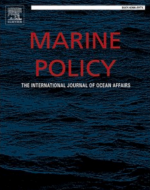Profile
My scientific interests primarily involve applied and fundamental research in zoology and marine biology, using empirical approaches at the intersection of the ecological sciences, technology, and the humanities, to better disentangle these wildlife and human interactions.
Marine mammals, seabirds, fishes, sharks and humans interact in the Chagos Archipelago in ways that are not fully yet understood.
Specifically, I am interested in 1) what are the species and abundance of cetaceans in the Chagos Archipelago, where do they use the reserve, and how protected are they there compared with elsewhere in the Indian Ocean?
2) How do we better tackle illegal, unreported, unregulated fisheries occurring inside the reserve?
3) How do seabirds, cetaceans, tunas, and sharks interact with each other and their prey?
Together with project partners in Sri Lanka, the Maldives and elsewhere in the UK, I’ll be attempting to answer these questions combining information from passive and active acoustics, BRUVS, catch statistics, patrol-based monitoring, and others, in order to improve the management of the Chagos Archipelago.
Only by studying marine animals in the last pockets of pristine wildlife can we fully appreciate their roles and functions in maintain healthy ecosystems.
Biography
My Projects
Other interests
Global distribution of marine ecosystem size structure
My Publications

The Socioeconomic and Environmental Niche Protected Areas Reveals Global Conservation Gaps and Opportunities
Mouillot, D., Velez, L., Albo Nicolas Casajus, C., Claudet, J., Delbar, V., Devillers, R., Letessier, T.B., Loiseau, N., Manel, S., Mannocci, L., Meeuwig, J., Mouquet, N., Nuno, A., O’Connor, L., Parravicini, V., Renaud, J., Seguin, R., Troussellier, M., Thui, W. (2024). The socioeconomic and environmental niche protected areas reveals global conservation gaps and opportunities. Nature Communications

Big Brands Impact Small Islands: Sources of Plastic Pollution in a Remote and Protected Archipelago
Savage, J., Chamberlain, A., Fellows, M., Jones, R., Letessier, T.B., Llewellyn, F., Morritt, D., Rowcliffe, M., Koldewey, H. (2024). Big brands impact small islands: Sources of plastic pollution in a remote and protected archipelago. Marine Pollution Bulletin.

Divergent Responses of Pelagic and Benthic Fish Body Size Structure to Remoteness and Protection From Humans
Letessier, T.B., Mouillot D., Mannocci, L., Jabour Christ, H., Mohammed Elamin, E., Mohamed Elamin, S., Friedlander, A.M., Hearn, A., Juhel, J.-B., Kleiven, A.R., Moland, E., Mouquet, N., Nillos-Kleiven, P.J., Sala, E., Thompson, C.D.H., Velez, L., Vigliola, L., Meeuwig, J.J. (2024). Divergent responses of pelagic and benthic fish body size structure to remoteness and protection from humans. Science.

Valuable Bycatch: Eliciting Social Importance of Sharks in Sri Lanka Through Value Chain Analysis
Collins, C., Letessier, T.B., Benaragama, A., Broderick, A., Wijesundara, I., Wijetunge, D., Nuno, A. (2023). Valuable bycatch: Eliciting social importance of sharks in Sri Lanka through value chain analysis. Marine Policy.

Illegal Fishing Spike in MPA During COVID-19 Calls for Broader Adaptive Management
Collins, C., Kerry, C.R., de Vos, A., Karnad, D., Nuno, A., Letessier, T.B. (2023). Illegal fishing spike in MPA during COVID-19 calls for broader adaptive management. Current Biology.











